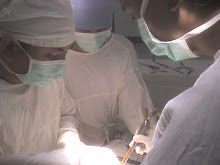Premature Infant
Any infant born before 37 wk gestation.
Previously, any infant weighing <>
Etiology and Signs
The cause of premature labor, whether or not preceded by premature rupture of the membranes, is usually unknown. However, maternal histories commonly show low socioeconomic status, inadequate prenatal care, poor nutrition, poor education, unwed state, and intercurrent, untreated illness or infection. Other risk factors include untreated maternal bacterial vaginosis and previous preterm birth.
The premature infant is small, usually weighing. In males, the scrotum may have few rugae, and the testes may be undescended. In females, the labia majora do not yet cover the labia minora.
Complications
Most complications relate to the immature functioning of organ systems.
Surfactant production is often inadequate to prevent alveolar collapse and atelectasis, which results in respiratory distress syndrome
Because of inadequate coordination of sucking and swallowing reflexes, the infant born before 34 wk gestation may need to be fed intravenously or by gavage. Immaturity of the respiratory center in the brain stem results in apneic spells . Apnea may also result from hypopharyngeal obstruction alone (obstructive apnea) or in combination with central apnea (mixed apnea). In preterm infants, the periventricular germinal matrix is prone to hemorrhage, which may extend into the cerebral ventricles (intraventricular hemorrhage). Infarction of the periventricular white matter (periventricular leukomalacia) may also occur for reasons that are incompletely understood. Hypotension, inadequate or unstable brain perfusion, and BP peaks (as when fluid or colloid is given rapidly IV) may contribute to cerebral infarction or hemorrhage.
Sepsis or meningitis is about 4 times more likely in the premature than in the full-term newborn. The increased likelihood of these infections results from indwelling intravascular catheters and endotracheal tubes and from areas of skin breakdown and the markedly reduced serum immunoglobulin levels in preterm infants. Preterm infants are uniquely susceptible to necrotizing enterocolitis
Premature infants have an exceptionally large body surface area to body mass ratio; therefore, when exposed to temperatures below the neutral thermal environment , they rapidly lose heat and have difficulty maintaining their body temperature.
The small stomach and immature sucking and swallowing reflexes in premature infants hinder adequate oral or nasogastric tube feedings and create a risk of aspiration. Most premature infants tolerate breast milk, proprietary milk formulas, or specially prepared premature infant formulas that contain 24 kcal/oz. Small premature infants have been successfully tube fed with their own mother's milk, which provides immunologic and nutritional factors that are absent in altered cow's milk formulas. However, breast milk does not provide sufficient calcium, phosphorus, and protein for very low birth weight infants (<>
In the first 1 or 2 days, if adequate fluids and calories cannot be given by mouth or nasogastric or nasoduodenal tube because of the infant's condition, a 10% glucose solution with maintenance electrolytes added may be given IV to prevent dehydration and malnutrition. Continuous breast milk or formula feeding via nasoduodenal or gastric tube can satisfactorily maintain caloric intake in small, sick premature infants, especially those with respiratory distress or recurrent apneic spells. Feedings are begun with small amounts of half-strength formula; if tolerated, the volume and concentration of feedings are slowly increased over 7 to 10 days. In very small or critically sick infants, adequate nutrition may be provided by total parenteral hyperalimentation via a peripheral IV or a percutaneously or surgically placed central catheter until full enteral feedings can be tolerated.
Kidney:
Renal function is immature in the premature infant, so that the concentrating and diluting limits of urine are less than those in the full-term infant. Late metabolic acidosis and growth failure may result from the immature kidney's inability to excrete fixed acids, which accumulate with high-protein formula feedings and as a result of bone growth. As a result, sodium and bicarbonate are lost in the urine. Oral sodium bicarbonate (1 to 2 mEq/kg/day in 4 to 6 divided doses) may be needed for several days.
Premature infants develop hyperbilirubinemia more often than do full-term infants, and kernicterus may occur at serum bilirubin levels as low as 10 mg/dL (170 µmol/L) in small, sick premature infants. The higher bilirubin levels in premature infants may be partially due to inadequately developed hepatic excretion mechanisms, including deficiencies in bilirubin's uptake from the serum, its hepatic conjugation to bilirubin diglucuronide, and its excretion into the biliary tree. Decreased bowel motility enables more bilirubin diglucuronide to be deconjugated within the intestinal lumen by the luminal enzyme ![]() -glucuronidase, thus permitting increased reabsorption of free bilirubin (enterohepatic circulation of bilirubin). Conversely, early feedings increase bowel motility and reduce bilirubin reabsorption and can thereby significantly decrease the incidence and severity of physiologic jaundice. Uncommonly, delayed clamping of the umbilical cord can also increase the risk of significant hyperbilirubinemia by allowing the transfusion of a large RBC mass; RBC breakdown and bilirubin production are thus increased.
-glucuronidase, thus permitting increased reabsorption of free bilirubin (enterohepatic circulation of bilirubin). Conversely, early feedings increase bowel motility and reduce bilirubin reabsorption and can thereby significantly decrease the incidence and severity of physiologic jaundice. Uncommonly, delayed clamping of the umbilical cord can also increase the risk of significant hyperbilirubinemia by allowing the transfusion of a large RBC mass; RBC breakdown and bilirubin production are thus increased.
Prevention
The risk of preterm delivery, which is one of the chief causes of neonatal morbidity and mortality, can be reduced by ensuring that all women, especially those in high-risk groups, have access to early and appropriate prenatal care.

Tidak ada komentar:
Posting Komentar